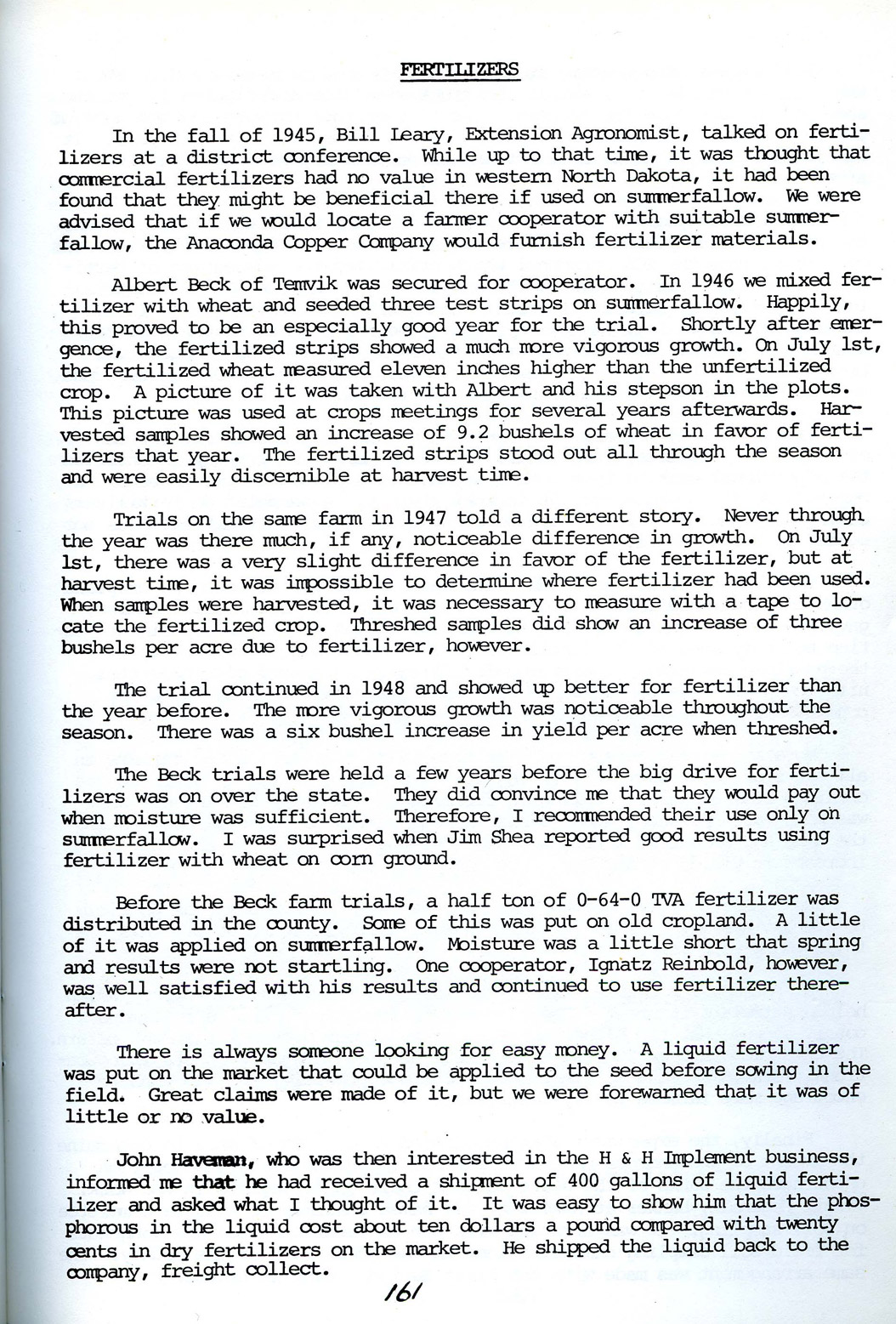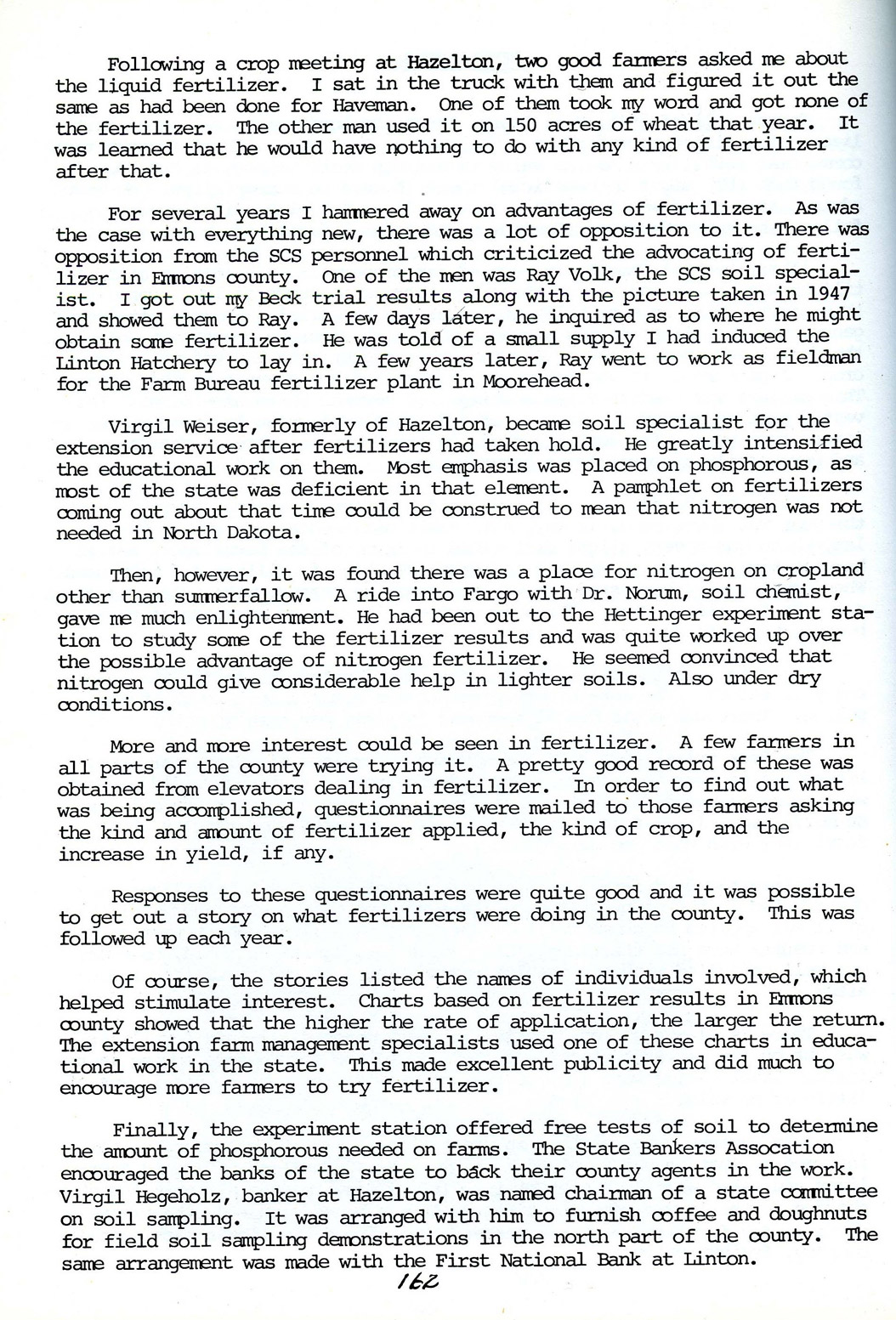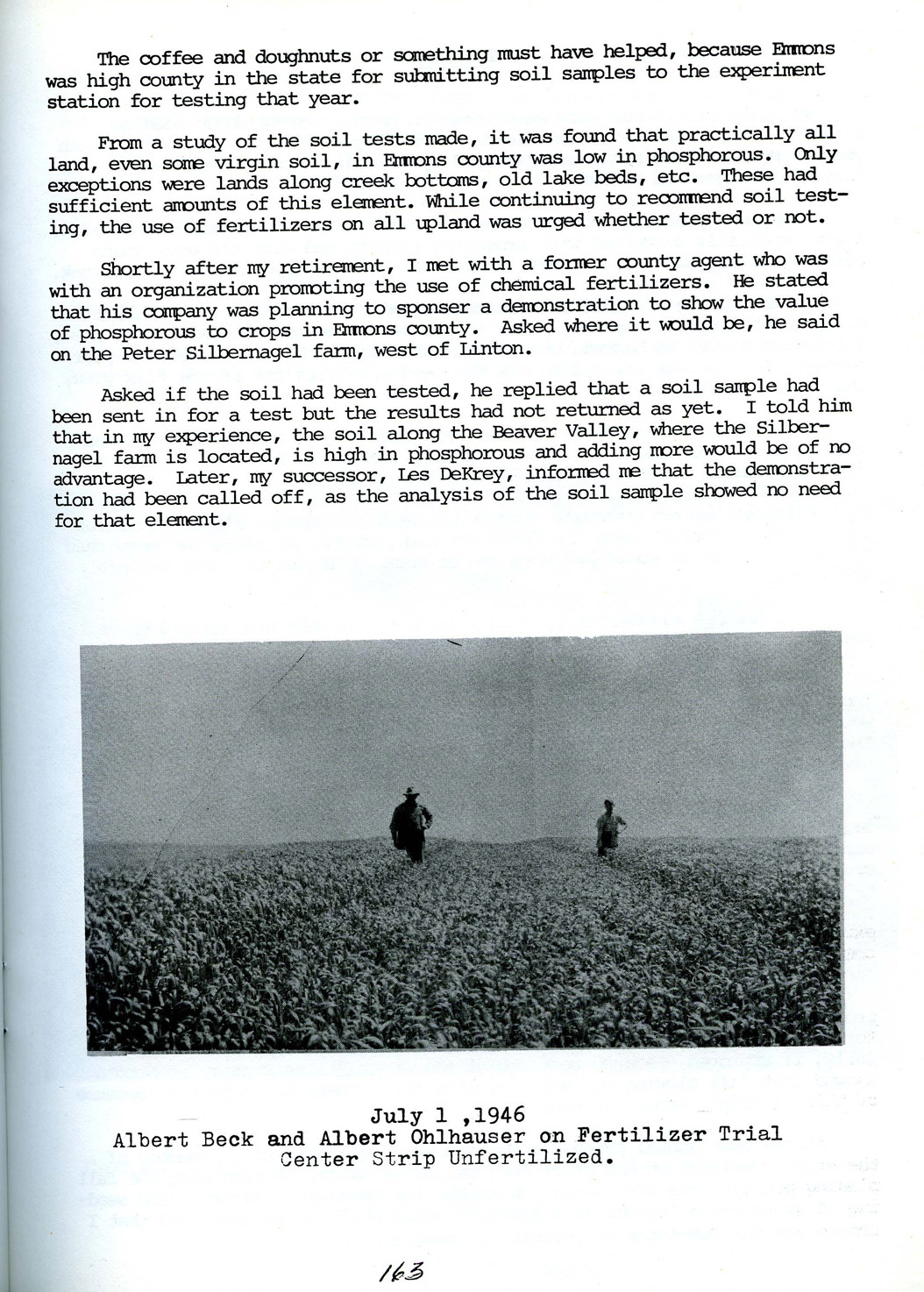Following World War II (1941-1945), the world population grew at an astounding rate. The population was 2.56 billion in 1950. By 1960, the population had grown by 22% to 3.04 billion. Agriculture would have to make large changes to feed billions more people. (See Image 12.)
,-ca-1940s-optimized.jpg)
Of course, not all of this agricultural activity took place in North Dakota, but North Dakota wheat farmers were affected by what has been called the Green Revolution. The Green Revolution depended on technological developments and the application of existing technologies in combination that would improve agricultural production.
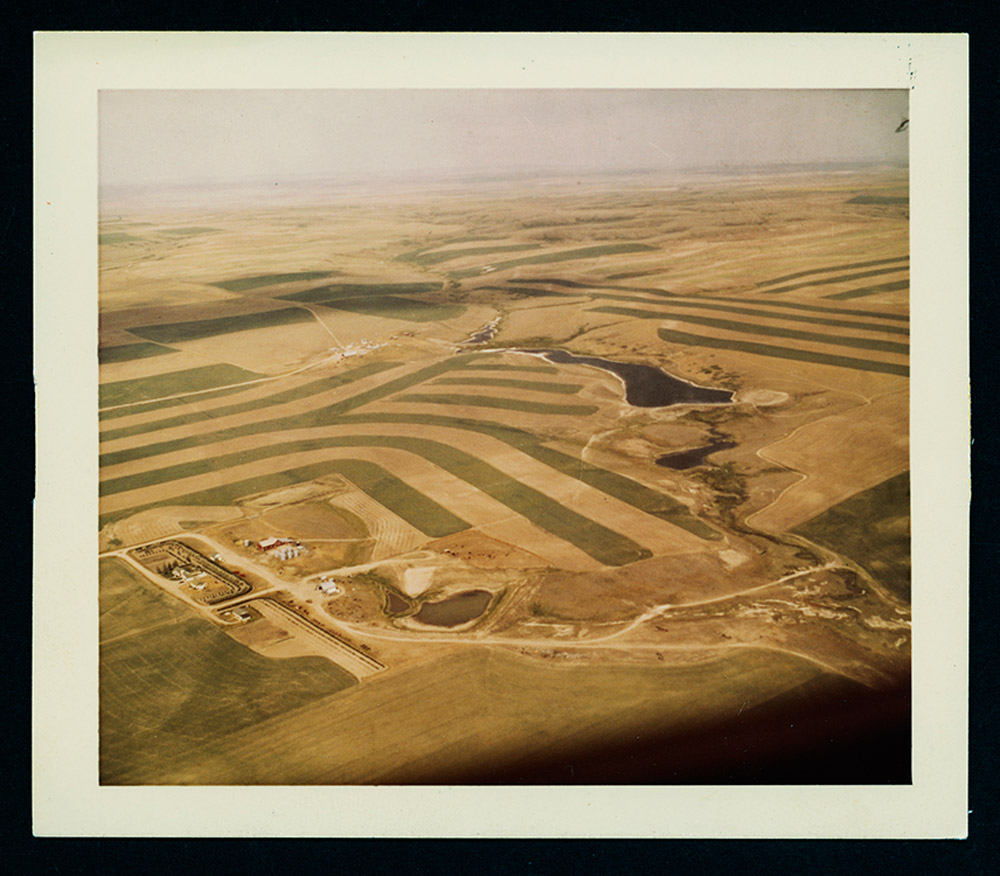
The technologies included irrigation and the use of chemical pesticides, herbicides, and fertilizers. An important technological innovation was the breeding of wheat to develop high-yielding varieties or HYVs. The HYVs were also modified by breeding to grow well with synthetic nitrogen fertilizers.The Green Revolution was far more important in Asia, Africa, and Mexico than in the United States where many new technologies had already been introduced. Growing populations in those regions and pre-modern agricultural methods left millions at risk for starvation. Dr. Norman Borlaug has been given credit for many of the genetic advances in wheat. Other scientists improved the yields of rice and other grains. With the proper combination of breeding, irrigation, fertilizer, herbicides, and pesticides, the HYVs outperformed traditional varieties of wheat. Without the proper combination, the HYVs would not increase production. (See Image 13.)
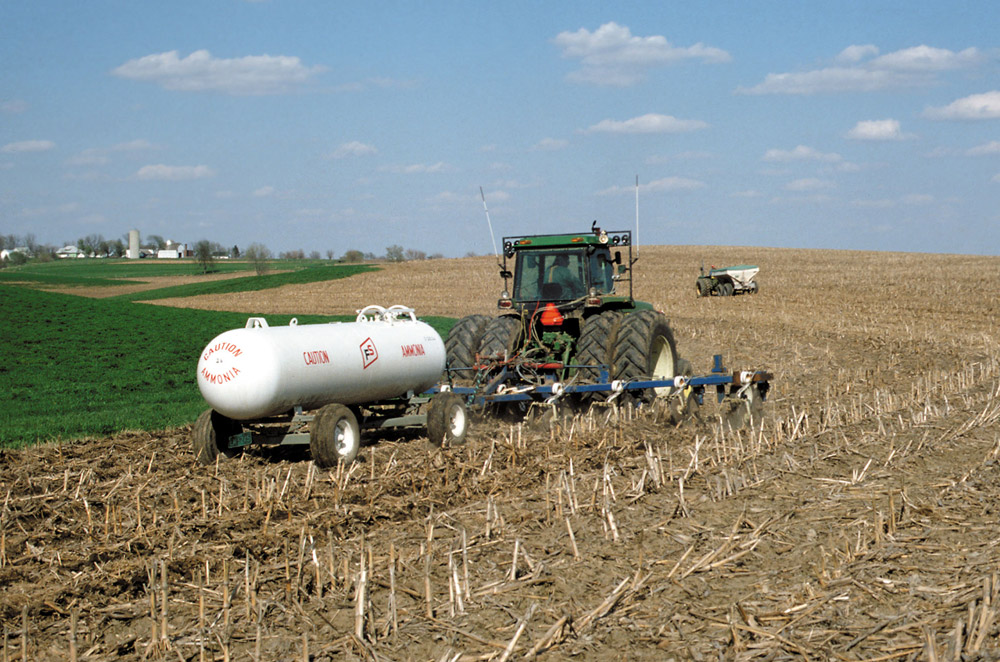
Fertilizer is necessary to restore the nutrient qualities to the soil. Plants take the nutrients out of the soil; if the soil is not fertilized, the nutrient qualities will diminish every time a crop is planted. Traditionally, farmers fertilized their fields with animal manure. Waste from barns and corrals were spread on the fields in the fall, or animals were turned out into the fields after the crops had been harvested. On the Great Plains, this combination of livestock and wheat did not always benefit the farmer. Where the land was perfect for growing wheat, some farmers did not keep herds of cattle. By the 1920s, farmers seldom fertilized their fields. Grain yields (bushels harvested per acre) dropped year after year as the natural nitrogen was removedIn the 1930s, Agricultural Extension agents encouraged farmers to fertilize their fields with “green manure.” This involved planting a crop such as rye and then plowing it under after it had reached a height of six to eight inches. Today, soil scientists understand that healthy soil is part of an extensive, complex biological environment. One teaspoon of soil contains algae, insects, earthworms, beetles, fungi and more than 100 million bacteria. No-till farming methods contribute to restoring or maintaining healthy soil. from the soil by the previous year’s crop.
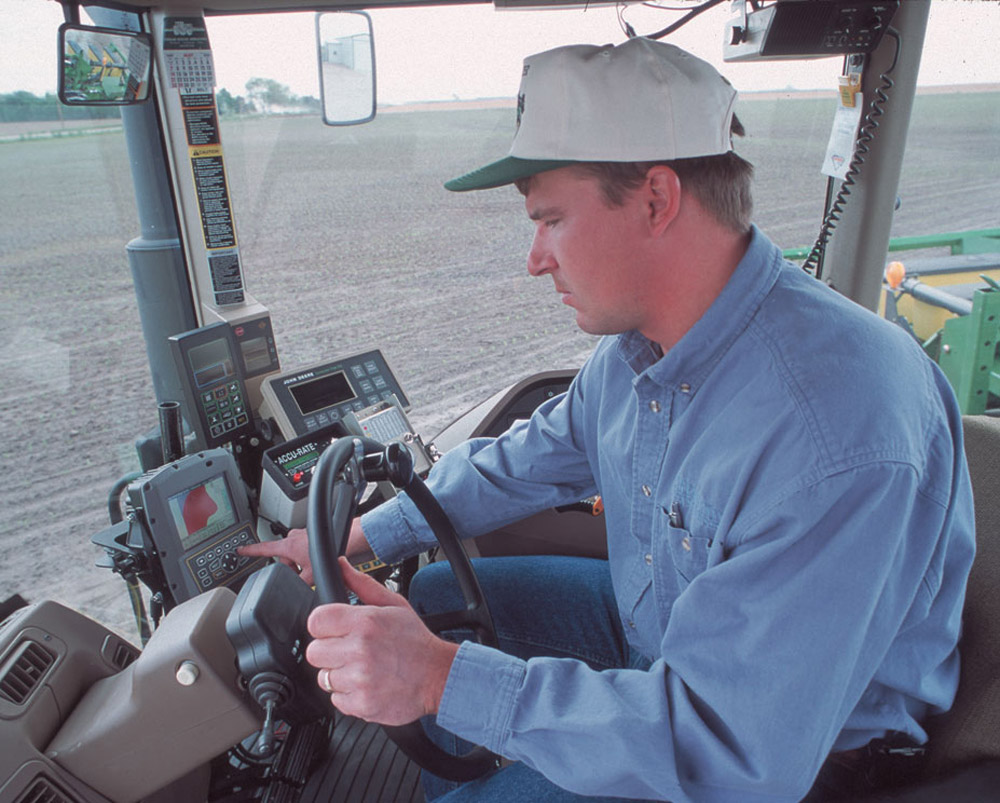
In 1909, a German scientist named Fritz Haber developed a method by which nitrogen could be taken from the air and made into nitrate,The process that makes nitrate fertilizer is very similar to the process that makes explosives. The ten factories that produced nitrogen-based explosives during World War II were converted after the war to fertilizer factories. The tragic April 17, 2013 explosion at a fertilizer plant in West, Texas reminds us of the close link between fertilizer and explosives. a form of nitrogen that plants could use as they grow. Although it was available, nitrogen-fertilizer was not in wide use until after World War II. In 1981, farmers reached a peak of fertilizer use at 23 million nutrient tons. (See Image 14.)
Herbicides became widely available at about the same time as fertilizer. Herbicides are chemicals that kill or control noxious (bad) weeds such as thistle or leafy spurge. Herbicides helped to control competition between crops and weeds for nutrients and water in the fields. Herbicides also meant a clean crop of grains. Grains with a high ratio of weed seeds brought in less income.
Pesticides were another part of the Green Revolution. The 1950s are sometimes called the Golden Age of Pesticides. Effective pesticides such as DDT were used to kill all kinds of insects from mosquitoes to grasshoppers. Between 1945 and 1950, the use of pesticides in the United States grew from 100 million pounds to over 300 million pounds. By 1960, more than 600 million pounds of pesticides were used. However, DDT was found to harm birds and other creatures. The American eagle became endangered, in part, because DDT weakened the shell of its eggs. Because of these concerns, DDT was banned in1972. Other pesticides are still in use, but their use is carefully governed.
Although the new “inputs” into agriculture were expensive, they also helped farmers increase production. (See Image 15.) Between 1941 and 1950, North Dakota farmers produced an average of 15.4 bushels of wheat per acre. With the new technologies and improved equipment, the average rose to 26 bushels of wheat per acre between 1977 and 1981. By 2012, the ten year average was 37.6 bushels of wheat per acre. (See Document 3.)
The Green Revolution was not all good. Pesticides damaged bird populations which limited the contribution of birds to insect control. Some specific pesticides are suspected of causing damage to honeybee colonies. Today, fertilizers washing from the fields in North Dakota and other Missouri River/Mississippi River states are believed to have created a “dead zone” at the mouth of the Mississippi River. About 10 thousand pounds of fertilizer and raw sewage wash into the rivers. The fertilizer and sewage accumulating at the mouth of the Mississippi River in the Gulf of Mexico, causes algae to bloom. The algae consume the available oxygen in the water and kill off the fish and other living things near the mouth of the river.
There is also concern that fertilizers and other farm chemicals are made from oil. Oil production may also fuel environmental problems. Modern farming and its chemical inputs contribute to increased CO2 (carbon dioxide) production. The technologies that have produced more food to prevent famine may be contributing to problems that compromise the health and safety of humans.
Why is this important? North Dakota has been a farming state from the beginning of the territorial period. The productive soils have given our state a world-wide reputation for grain production. North Dakota farmers have kept up with new technologies that have increased crop yields and farmers’ income. However, the same technologies seem to pose threats as well. There are many problems to be considered and solved as we continue to find new ways to utilize and improve on modern technology in agriculture.



